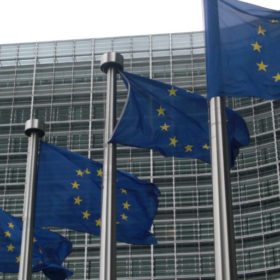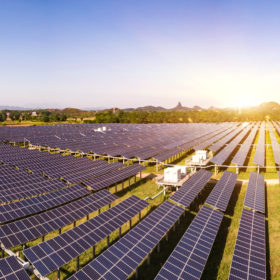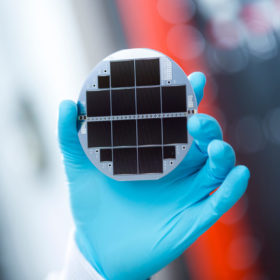EU MIP decision to have more effect on Indian PV market than safeguard tariffs
The proposed safeguard tariffs on imports from China and Malaysia are expected to generate a number of painful short-term impacts. Overall they are not expected to change much in the market, however, says TrendForce. What will have a bigger effect is the EU’s final MIP decision, due in September.
Minister outlines plan to become global renewables leader, at Intersolar Europe
Underlining India’s commitment to becoming the global renewable energy leader, Shri Anand Kumar, secretary of the Ministry of New and Renewable Energy, said the country plans 500 GW of capacity by 2030. He also underlined plans to become a solar and storage manufacturing hub; and said the International Solar Alliance needs to widen its membership.
Mahindra Electric to develop integrated electric mobility ecosystem in Tamil Nadu
The EV manufacturer will develop a complete system encompassing electric vehicles (EVs), smart parking, charging infrastructure and software integration platform NEMO for the experimental township of Auroville in Tamil Nadu. Mahindra has also unveiled an energy storage solution for EVs and will help harness renewable power.
Affordability and lack of charging points stalls electric vehicle take-up in India: Bloomberg
Bloomberg New Energy Finance says EVs will make up only 7% of new car sales in nation by 2030, compared to a predicted 44% for European sales, 41% in China, 34% in the US and 17% in Japan
AT Solar builds innovative storage project based on hydrogen in Sweden
The goal of the project, RE 8760 is to show how the storage of renewable energies can make them usable all year round. The generated solar power is stored and converted into hydrogen. It can also be conserved over long periods and used to recharge fuel cell vehicles during the dark winter months.
Swedish scientists develop new method to reduce defects in organic solar cells
The researchers found that printed solar cells achieved a better performance when they used an active polymer material as glue.
Solar to top 104 GW of new installations this year, finds GTM Research
Latest Global Solar Demand Monitor from GTM Research forecasts 6% annual increase in PV installation growth although current largest markets will register 7% contraction while geographic diversification poised to grow.
Solliance achieves 14.5% cell efficiency on perovskite module
Scientists at European solar research organization, Solliance have announced the achievement of 14.5% conversion efficiency on a perovskite module. The module uses a glass substrate, and the efficiency was measured on an aperture area of 144 cm².
Germany’s Fraunhofer ISE announces 33% efficiency for multi-junction solar cell
Together with Austrian equipment manufacturer EVG, Fraunhofer ISE has achieved an efficiency of 33.3% on a multi-junction solar cell. The highlight of the cell is the ultra-thin II-V semiconductor layer. However, it will be a few years before mass production is possible.
German scientists use germanium to improve performance of kesterite solar cells
Although current efficiencies for solar cells based on kesterite do not exceed 12.6%, the use of germanium may enable the development of cells with a higher energy band gap.














